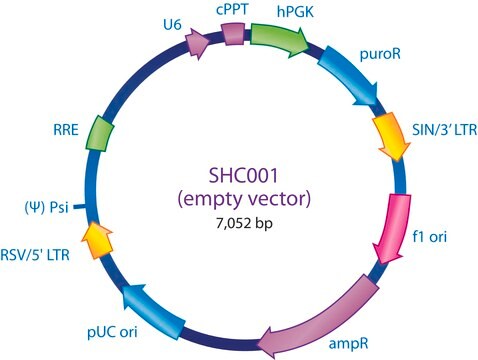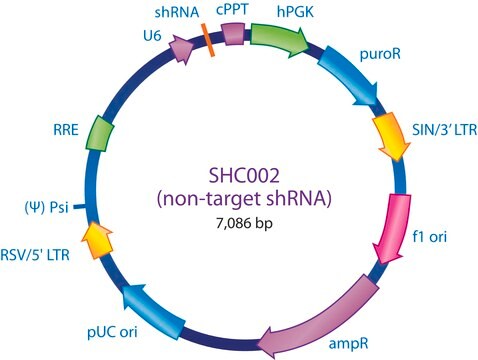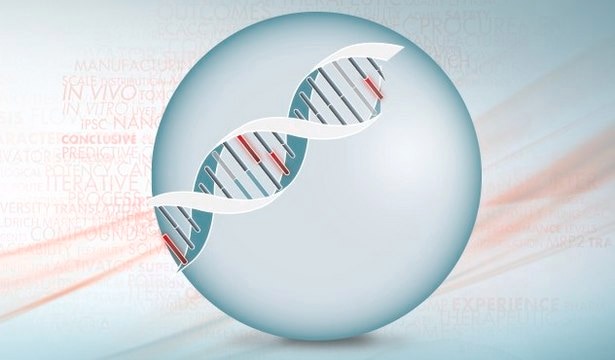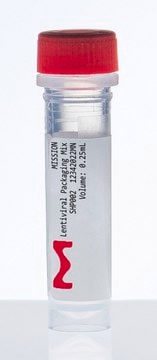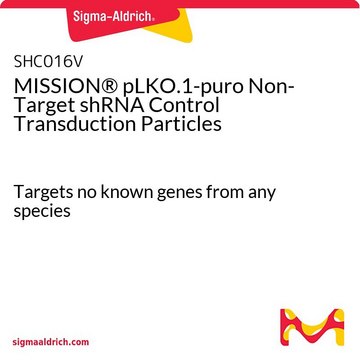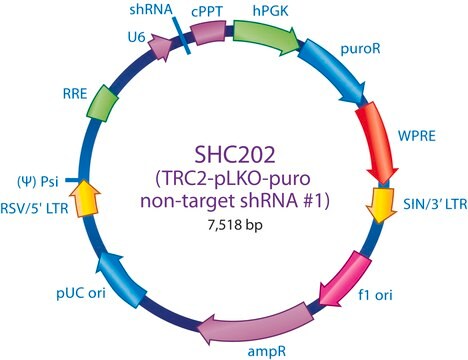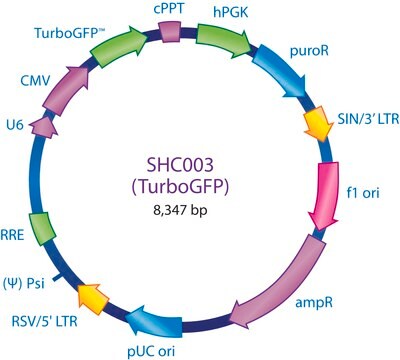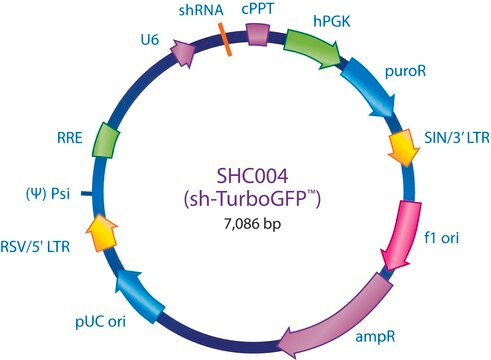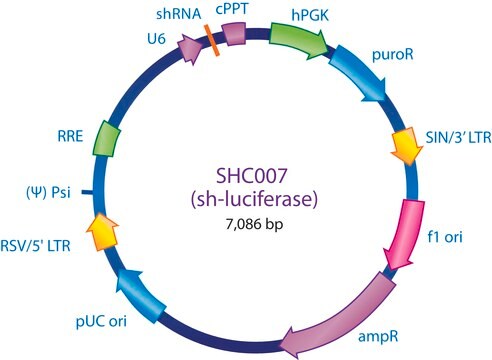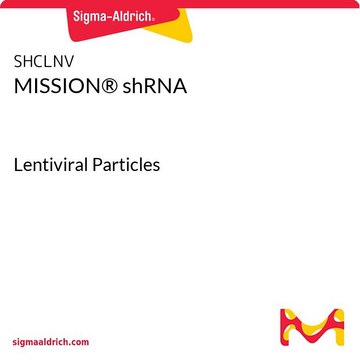SHC016
MISSION® pLKO.1-puro Non-Target shRNA Control Plasmid DNA
Targets no known genes from any species
Sinonimo/i:
MISSION® Control Vectors, negative control, negative shRNA control, non-target control, non-target shRNA, non-target shRNA control, shRNA control
About This Item
Prodotti consigliati
Livello qualitativo
Nome Commerciale
MISSION®
Concentrazione
500 ng/μL in TE buffer; DNA (10μg of plasmid DNA)
Condizioni di spedizione
dry ice
Temperatura di conservazione
−20°C
Cerchi prodotti simili? Visita Guida al confronto tra prodotti
Categorie correlate
Descrizione generale
Applicazioni
- in tumor cells for multicolour imaging
- in human adult low calcium temperature keratinocytes
- in mouse embryonic fibroblasts, to study the biological functions of IP6K1 (inositol hexakisphosphate kinase)
- to study the function of Zac1 (zinc finger protein regulating apoptosis and cell cycle arrest) expression in astroglial differentiation
Note legali
Raccomandato
Codice della classe di stoccaggio
10 - Combustible liquids
Classe di pericolosità dell'acqua (WGK)
WGK 2
Punto d’infiammabilità (°F)
Not applicable
Punto d’infiammabilità (°C)
Not applicable
Scegli una delle versioni più recenti:
Certificati d'analisi (COA)
It looks like we've run into a problem, but you can still download Certificates of Analysis from our Documenti section.
Se ti serve aiuto, non esitare a contattarci Servizio Clienti
Possiedi già questo prodotto?
I documenti relativi ai prodotti acquistati recentemente sono disponibili nell’Archivio dei documenti.
I clienti hanno visto anche
Il team dei nostri ricercatori vanta grande esperienza in tutte le aree della ricerca quali Life Science, scienza dei materiali, sintesi chimica, cromatografia, discipline analitiche, ecc..
Contatta l'Assistenza Tecnica.